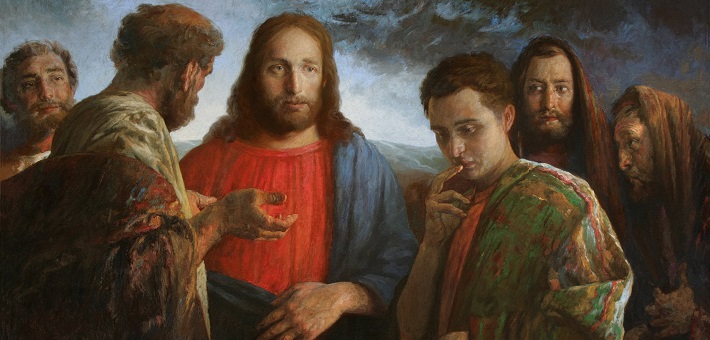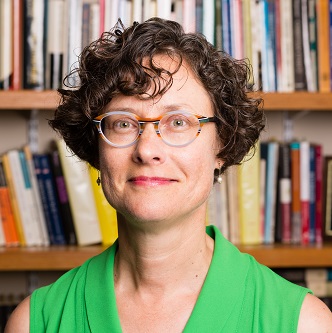Commentary on Amos 5:6-7, 10-15
In this passage, Amos preaches that ancient Israelite leaders incurred the wrath of the LORD because “you trample on the poor” (5:11). During that time, the 8th century BCE, the Assyrian Empire threatened the Northern Kingdom, and this southern prophet linked that to divine punishment for their mistreatment of the vulnerable.
The opening verse of this passage indicates the weightiness of what will follow: Seeking the LORD gives Israel its very life. The same sentiment also appeared in 5:4 and will return in verse 14. That emphasis on life—also a highlight in the Torah (Deuteronomy 30:19-20)—here stands over and against the phrases that point to punishment and destruction (5:6, 8-9, 11).
The poetic structures in this section help us to understand Amos’ message. Notice how certain words correspond to one another in the Hebrew poetic form parallelism. These linked terms highlight the prophet’s main points.
“The house of Joseph” (5:6, 15) encompasses two northern tribes as a way of indicating Amos’ overall audience. In 5:6 this phrase parallels “Bethel,” a northern historic worship site that also appears in 5:5 along with Gilgal and Beersheba. Amos does not have kind words for these locations! In 4:4 the context suggests the problem was not with the shrines so much as the incongruence between acts of worship and care for those most at risk.
The synonymous pair “justice”//“righteousness” in 5:7 appears in both the prophetic literature and the wisdom literature so frequently that one word connotes the other. Ensuring an equitable society has everything to do with right living, and vice versa. “Wormwood” is a bitter-tasting plant, so the metaphor refers to spoiling justice.While 5:8-9 are not included in the lectionary reading, it would be a pity to miss their beautiful creation imagery, which strikingly joins with descriptions of destroying the powerful. While some scholars consider these verses an insertion because they include new material and stray from the focus on mistreating the poor, they nonetheless invoke the same powerful deity who is intent on eliminating cruelty in the rest of the passage. Similar hymn-like fragments also occur in Amos 4:13 and 9:5-6.
“The gate” in verses 10, 12 and 15 refers to the city gate, an entry point that was a central gathering area in any ancient walled city.1 The parallel terms “reproves”//“speaks the truth” in 5:10 underscore the value of uncovering falsehood. Here this refers to one function of ancient city gates, their role as courthouse. Elders would meet as a judicial council to settle disputes brought by residents. We see this in Ruth 4:1-12, where Boaz consults with elders at the city gate about whether he or a nearer kinsman should receive Naomi’s property and become Ruth’s husband. In this and other such situations, elders and others who gathered at the city gate act as witnesses and jury for the resolution.
In 5:11a, the poetry provides a synonymous parallel about taking advantage of the poor by taxing their crops: “levies of grain.” The following lines unpleasantly surprise Amos’ prosperous audience. This time using antithetical parallelism, the prophet paints a picture of destroyed wealth: lavish homes and vineyards that they will never enjoy. As each line builds on the last, Amos’ accusations of unjustly taking from others (5:10-11a) reverses into fitting punishment: Now the wealthy will have their possessions taken from them (5:11b).2
The indictments resume in 5:12, where again Amos refers to the city gate, now with a different purpose than in verse 10. This was also where those in need could seek assistance, comparable to a contemporary state social services agency where someone could go to request help with housing or food. For instance, in Job 29:7-17, Job recalls his days as a righteous judge in the gate who cared for the vulnerable. Here, Amos rails against those leaders who “push aside” community members seeking assistance; he condemns those whose judgements could be bought. Interestingly, the parallel terms “righteous”//“needy” in 5:12 points to the inherent worth of those who lack life’s basics.
In 5:13 we finally reach a “therefore,” and it apparently advocates silence—a surprising conclusion, coming from an outspoken prophet. This reads as a side-comment cautioning us to consider the best path amid evil, whether holding our tongues, or speaking out despite possible risk. Donald Gowan suggests another interpretation based on an alternate translation of “prudent”: The “prosperous” will be “silent” because they will be “dead”!3 In that case, the verse would continue the condemnation of the powerful and wealthy that began in 5:11-12.
The poetry in 5:14-15 centers around the pairs “good”//“evil” in both verses—they are repeated and reversed in verse 15. This arranges the issues of the previous verses into dualistic categories using imagery that includes a third reference to the city gate, triple-underlining that symbol of justice and its value to God. Amos pushes his audience to what seems a simplistic solution: “seek good and not evil”// “hate evil and love good.” The details of the previous verses spelled out what that means: good equals justice and righteousness (5:7, 15) and uncovering the truth (10). Evil equals taxing the poor (11), taking bribes, and rejecting the needy (12). The punishment is destruction (5:6b, 9 and 11b), and the reward is life (6a, 14). The closing line reminds us that prophetic speech is not foretelling. The people can change and avert the punishments, if only a “remnant” of them. Who will “love good” and “hate evil” in response to this “gracious” God?
In case the contemporary connections are not immediately obvious, this passage should raise questions about economic inequities, tax structures for the poor versus rich, provision for the neediest in our communities, and leaders who provide care or ignore these situations. Will we heed Amos’ warnings any better than his original audience did?
Notes
- See the description and photo of the Hazor Gate on Bible Odyssey http://bibleodyssey.org/en/tools/image-gallery/d/divided-monarchy-hazor-gate.
- Daniel J. Simundson, Abingdon Old Testament Commentaries Hosea, Joel, Amos, Obadiah, Jonah, Micah: Minor Prophets (Nashville: Abingdon Press, 2005)
- “Amos” in NIB 7:390.


October 10, 2021